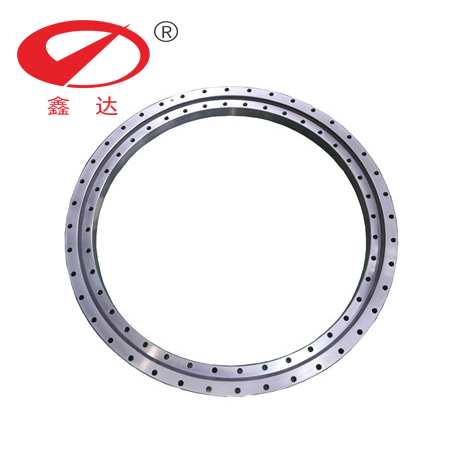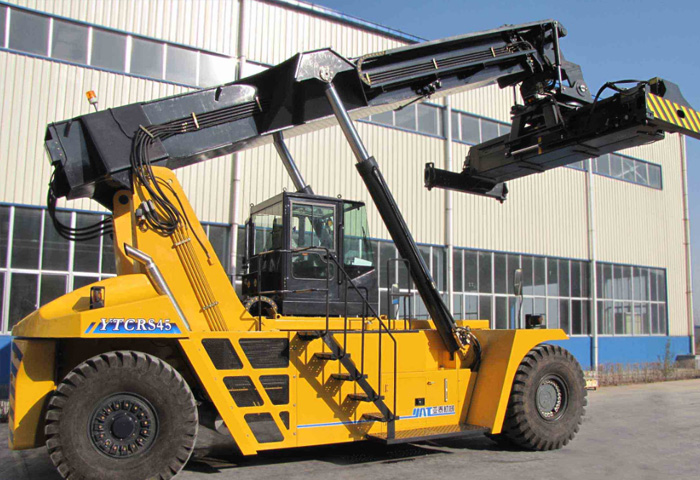
Pinion P1.18 Gearbox: The Ultimate Guide to This Revolutionary Bicycle Gear System
2025-03-08
The Pinion P1.18 gearbox is making waves in the cycling world, particularly among touring cyclists, mountain bikers, and those seeking a low-maintenance, high-performance drivetrain. This article delves into the intricacies of the Pinion P1.18 gearbox, explaining why it’s a game-changer and why you should seriously consider it for your next bicycle, especially if reliability and a wide gear range are high on your priority list.
What is the Pinion P1.18 Gearbox?
The Pinion P1.18 gearbox is an internally geared transmission system for bicycles. Unlike traditional derailleur systems, where gears are exposed and shifted using a chain that moves across multiple sprockets, the Pinion gearbox houses all the gears within a sealed unit located at the bottom bracket. This design offers several advantages, including increased durability, reduced maintenance, and a wider gear range. The "P1.18" designation refers to the model, indicating 18 evenly spaced gears.
The pinion p1.18 gearbox is a marvel of engineering, offering a massive 636% gear range, surpassing most, if not all, derailleur setups and even rivaling the renowned Rohloff Speedhub. This vast range ensures you have the right gear for any terrain, from steep climbs to fast descents. It’s also designed for longevity and can withstand significant wear and tear, making it a favorite among serious cyclists, particularly those who go on long tours or demanding rides.
How Does the Pinion P1.18 Gearbox Work?
The Pinion P1.18 uses a series of spur gears, precisely machined and enclosed within a sealed, oil-filled housing. The gearbox is operated by a twist shifter, similar to those found on internally geared hubs, but with significantly more gears and a more robust mechanism. When you twist the shifter, you engage a different combination of internal gears, changing the ratio between your pedal strokes and the rotation of the rear wheel.
The sealed design is a crucial aspect of its operation. It prevents water and dirt from entering the system, which are the primary enemies of traditional derailleurs. This protection significantly reduces the need for cleaning and lubrication, and it extends the lifespan of the internal components. The Pinion system typically only requires an oil change every 10,000 kilometers (6,200 miles) or once a year, making it incredibly low-maintenance. This is a huge plus for those involved in, for example, bicycle touring, where self-sufficiency is important.
What are the Benefits of a Pinion P1.18 Gearbox?
The Pinion P1.18 gearbox offers numerous advantages over traditional derailleur systems and even other internal gear systems:
- Extremely Wide Gear Range: With a 636% gear range, the P1.18 provides incredibly low gears for climbing and high gears for speed, catering to all riding conditions. This range makes it the leader in the internal gear systems market, especially useful for laden touring or challenging off-road terrain.
- Low Maintenance: The sealed design protects the internal components from the elements, drastically reducing maintenance. Only a simple oil change is required annually or every 10,000 km.
- Durability: The robust construction and sealed housing make the Pinion gearbox exceptionally durable, capable of withstanding harsh conditions and heavy loads.
- Smooth Shifting: The Pinion system offers smooth and precise gear changes, even under load. You can shift multiple gears at once, and you can shift while stationary, which is beneficial in stop-and-go traffic or when starting on an incline.
- Cleanliness: With no external derailleurs or exposed sprockets, the system stays clean, preventing oil and grime from accumulating on your clothes or bike.
- Centered Weight Distribution: Weight is low and central.

Pinion P1.18 vs. Rohloff Speedhub: Which is Better?
The Rohloff Speedhub 500/14 is a highly respected and widely used internally geared hub, often considered the gold standard. Comparing the Pinion P1.18 and the Rohloff hub is a common question for cyclists considering an upgrade.
| Feature | Pinion P1.18 | Rohloff Speedhub 500/14 |
|---|---|---|
| Gears | 18 | 14 |
| Gear Range | 636% | 526% |
| Gear Steps | 11.5% | 13.6% |
| Weight | ~2700 grams (depending on configuration) | ~1700 grams (hub only) |
| Location | Bottom bracket | Rear hub |
| Maintenance | Oil change every 10,000 km or annually | Oil change every 5,000 km or annually |
| Shifting Under Load | Yes | Limited |
| Stationary Shifting | Yes | Yes |
Both systems are excellent, but the choice depends on individual needs and preferences. The Pinion offers a wider gear range and more evenly spaced gears, making it better suited for extreme variations in terrain. The Rohloff is lighter, which can be a significant factor for some riders. The Pinion’s location at the bottom bracket also results in better weight distribution, while the Rohloff’s location in the rear hub can make the rear wheel feel heavier. Some people find the shifting slightly more efficient on a Rohloff and Pinion would be excellent for a tandem, where power and smooth shifting are critical. The weight of the Pinion is greater than the Rohloff hub, roughly 1000 grams more.
Ultimately, a test ride on bikes equipped with a Pinion and a Rohloff is the best way to determine which feels better for you.
What Types of Bikes are Compatible with the Pinion P1.18?
The Pinion P1.18 gearbox requires a specially designed frame because it mounts at the bottom bracket, replacing the traditional crankset and bottom bracket assembly. This means you can’t simply retrofit a Pinion to any bike. Manufacturers like AZUB and others are producing frames specifically designed for the Pinion system.
The Pinion is becoming increasingly popular on:
- Touring Bikes: Its durability, low maintenance, and wide gear range make it ideal for long-distance bicycle touring.
- Mountain Bikes: The sealed design and robust construction are perfect for off-road riding, protecting the gear system from mud, water and dirt.
- Recumbent Bikes: AZUB, a manufacturer specializing in recumbent bikes, offers several models with Pinion gearboxes.
- Electric Bicycles
- Tandem Bikes: The system’s ability to handle high torque and provide smooth shifting is beneficial for tandems.

Is the Pinion P1.18 maintenance free?
While often described as virtually "maintenance-free," the Pinion P1.18 gearbox does require some maintenance, albeit minimal. The primary maintenance task is an oil change, recommended every 10,000 kilometers (6,200 miles) or once a year, whichever comes first. This involves draining the old oil and refilling the gearbox with fresh Pinion oil. The process is relatively straightforward and can be done at home with basic tools and the provided instructions.
Compared to a traditional derailleur system, which requires frequent cleaning, lubrication, and adjustments, the Pinion’s maintenance is significantly less demanding. There are no derailleurs to adjust, no cassette to clean, and no chain to worry about stretching or breaking. This makes the Pinion a great choice for riders who prioritize simplicity and reliability over frequent tinkering.
How Much Does a Pinion P1.18 Gearbox Weigh?
The Pinion P1.18 gearbox itself weighs approximately 2700 grams (around 6 pounds). This is heavier than a typical derailleur system or even a Rohloff Speedhub. However, it’s important to consider the overall system weight. While the Pinion gearbox is heavier, it replaces several components: the front and rear derailleurs, the cassette, the front chainrings, and part of the bottom bracket.
When considering the total weight difference, the Pinion system typically adds about 1 kilogram (2.2 pounds) to the overall bike weight compared to a high-end derailleur setup. This added weight is centralized and low on the bike, which can actually improve handling and stability, particularly on loaded touring bikes or mountain bikes.
What is the Gear Range of the Pinion P1.18?
The Pinion P1.18 boasts an impressive gear range of 636%. This means the lowest gear is 6.36 times easier to pedal than the highest gear. This vast range is one of the Pinion’s most significant selling points.
To put this in perspective:
- A typical wide-range derailleur setup might offer a gear range of 400-500%.
- The Rohloff Speedhub 500/14 offers a gear range of 526%.
The Pinion P1.18’s wider range provides both lower gears for climbing steep hills and higher gears for achieving higher speeds on flat ground or downhills. The 18 gears are also evenly spaced, with 11.5% steps between each gear. This consistent spacing makes it easy to find the perfect gear for any situation, providing a smooth and efficient riding experience.

How Does the Pinion P1.18 Affect Bike Handling?
The location and weight of the Pinion P1.18 gearbox can positively impact bike handling. Because the gearbox is situated at the bottom bracket, the weight is low and centered on the bike. This centralized weight distribution can improve stability, especially when carrying heavy loads on a touring bike or navigating challenging terrain on a mountain bike.
The absence of a rear derailleur also contributes to improved handling. Without a derailleur hanging down, there’s less risk of snagging it on obstacles or damaging it in a fall. This is particularly beneficial for off-road riding. The cleaner lines of the bike also contribute to better aerodynamics, although this is a minor benefit for most riders.
Where Can I Buy a Bike Equipped with a Pinion P1.18 Gearbox?
As the Pinion P1.18 requires a specific frame design, you’ll need to purchase a bike from a manufacturer that offers Pinion-equipped models. Some notable brands include:
- AZUB: Specializes in recumbent bikes and trikes, with several Pinion options.
- Tout Terrain: Known for high-quality touring and expedition bikes.
- Nicolai: Offers a range of mountain bikes and custom builds.
- Santos: Another brand specializing in robust touring bikes.
- Pilot Cycles
- Van Nicholas
These, and other Pinion frame builders, often have dealer networks, or you can order directly from them. It’s also becoming more common to find Pinion-equipped bikes at specialized bike shops, especially those catering to touring cyclists or mountain bikers. Xinda Slewing Bearing, for instance, does not supply the Pinion Gearbox itself, but we do manufacture the high-quality slewing bearings that are vital components in many heavy-duty applications where gearboxes like the Pinion might be used. For example, a crane or excavator that utilizes a Pinion for its precise control and durability would also rely on a robust slewing bearing for its rotational movement. Check our product page for the I.1166.20.00.B Ball Slewing Bearing for such demanding tasks.
What is the price of the P1.18?
The Pinion P1.18 gearbox is a premium component, and its price reflects its advanced engineering and high quality. Expect to pay a significant premium for a bike equipped with a P1.18 compared to a similar bike with a traditional derailleur system.
The gearbox itself typically costs between $1,500 and $2,000 USD, depending on the specific configuration and where you purchase it. A complete bike equipped with a Pinion P1.18 can range from around $4,000 to $8,000 or more, depending on the frame, components, and manufacturer.
While the initial investment is higher, it’s important to consider the long-term cost of ownership. The Pinion’s low maintenance requirements and exceptional durability can save you money on repairs and replacements over time. It’s also a system that’s built to last, potentially outlasting several traditional drivetrains. For applications that require high precision and reliability, like certain types of industrial machinery or medical equipment, the quality of the slewing bearing is paramount. Our 011.20.1220.000.11.1504 Precision double-row ball slewing ring is an excellent example, offering exceptional accuracy and load-bearing capacity.

Conclusion: Key Takeaways
- The Pinion P1.18 gearbox is a revolutionary bicycle gear system offering an unmatched 636% gear range.
- It’s incredibly durable, low-maintenance, and provides smooth, precise shifting.
- The Pinion is ideal for touring, mountain biking, recumbents, and tandems.
- It requires a specially designed frame.
- The Pinion is a significant investment, but its long-term benefits often outweigh the initial cost.
- The Pinion system is heavier than a traditional derailleur setup, but the weight is centralized, improving handling.
- The only regular maintenance is an oil change every 10,000 km or annually.
- The Pinion p1.18 gearbox represents a significant advancement in bicycle transmission technology.
- Consider the E.1200.20.00.B BALL BEARING if you’re looking for a robust and versatile slewing bearing solution for applications requiring high radial and axial load capacity.





